Finding which darts to buy depends heavily on your grip, throwing style, and personal preferences, but generally, starting with a balanced, medium-weight dart around 22-24 grams is a solid choice for beginners. This article will guide you through the key factors to consider when selecting darts, including weight, material, grip, and shaft length, helping you find the perfect set to elevate your game.
⚠️ Still Using Pen & Paper (or a Chalkboard)?! ⚠️
Step into the future! The Dart Counter App handles all the scoring, suggests checkouts, and tracks your stats automatically. It's easier than you think!
Try the Smart Dart Counter App FREE!Ready for an upgrade? Click above!
Understanding the Anatomy of a Dart
Before diving into which darts to buy, let’s break down the components of a dart:
- Barrel: The main body of the dart, determining its weight, grip, and balance.
- Shaft: Connects the barrel to the flight, influencing stability and aerodynamics.
- Flight: Provides stability during flight, impacting trajectory and accuracy.
- Point: The tip of the dart that penetrates the dartboard. Different point types cater to different boards.
Factors to Consider When Choosing Darts
Several key factors influence which darts to buy to match your individual playing style. Let’s look at each of them:
Dart Weight
Dart weight is a crucial factor in dart selection. Lighter darts (under 22 grams) are easier to throw with a faster, more flick-like motion. Heavier darts (over 24 grams) require more power and a smoother, more deliberate throw. Most players find a sweet spot between 22 and 24 grams. Experiment to see which dart weight feels most comfortable and consistent for you. Consider how the dart feels in your hand and during your follow-through. Heavier darts can be more forgiving of slight inconsistencies in your throw.
Barrel Material
The barrel material significantly affects the dart’s grip and durability. The most common materials are:
- Brass: An affordable option, but prone to wear and tear. Offers a less refined grip.
- Nickel Silver: A step up from brass, offering improved durability and a slightly better grip.
- Tungsten: The premium choice, offering high density, allowing for slimmer barrels and enhanced grip patterns. Tungsten darts are more durable and offer a more consistent feel. Consider the darts carbon shaft for added durability and performance.
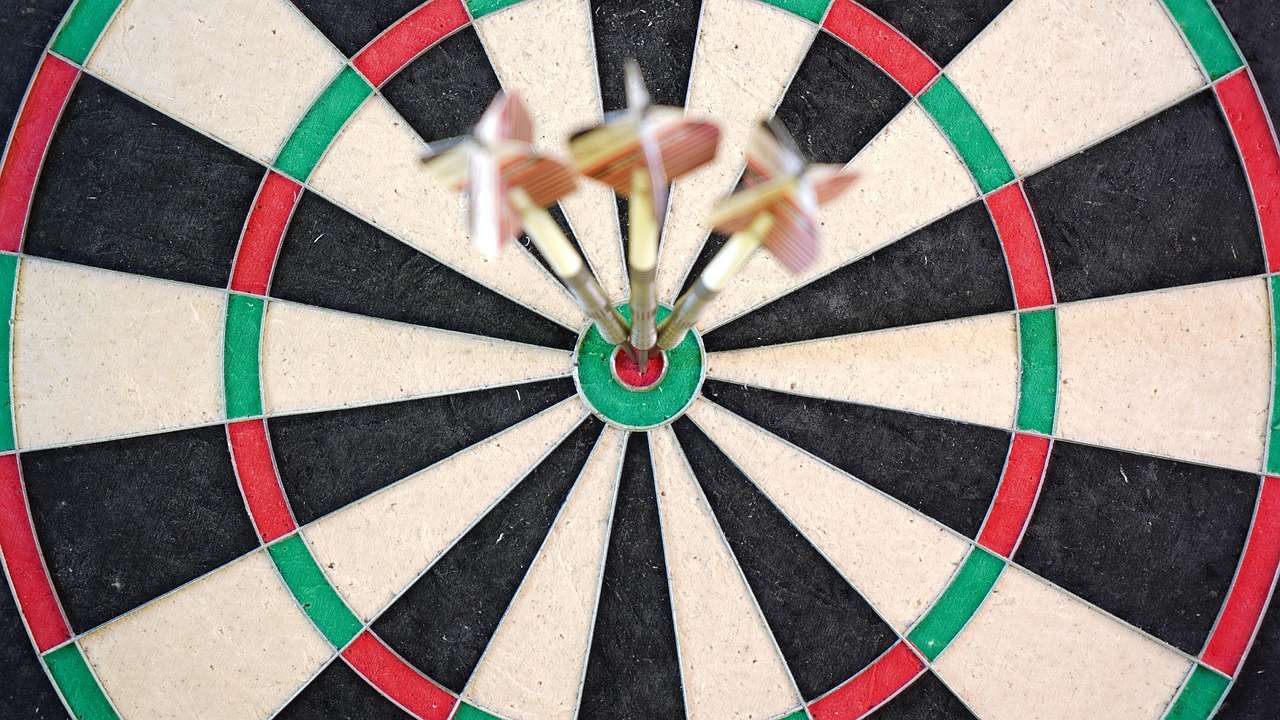
Higher tungsten content (e.g., 90% or 95%) generally indicates a higher-quality dart.
Grip
Grip is a very personal preference. Some players prefer a smooth barrel, while others need a more aggressive texture. Common grip types include:
- Knurled: Diamond-shaped or straight grooves that provide a firm grip.
- Ringed: Grooves cut around the barrel in rings.
- Scalloped: Concave sections that offer a specific point of contact.
- Smooth: Minimal or no grip for a clean release.
Experiment with different grip styles to find what feels most secure and allows for a consistent release. A secure grip minimizes slippage and helps maintain control during your throw. It’s a key element in choosing darts. Some players even use grip wax for an extra advantage.
Shaft Length and Material
Shaft length influences the dart’s trajectory. Shorter shafts generally result in a flatter trajectory, while longer shafts create a more arced flight path. Shafts are typically made from:
- Plastic: Affordable and readily available, but less durable.
- Aluminum: More durable than plastic, offering better consistency.
- Carbon Fiber: Lightweight and extremely strong, providing excellent stability.
Experiment with different shaft lengths to see what provides the best angle and grouping for your throwing style. The right shaft length can significantly improve your accuracy. Don’t forget to explore darts walk ons for inspiration and style!
Flights
Flights are crucial for stabilizing the dart in flight. They come in various shapes and sizes, each influencing the dart’s trajectory and stability. Common flight shapes include:
- Standard: Provides maximum stability and control.
- Slim: Offers a faster flight with less drag.
- Kite: A good compromise between stability and speed.
- Pear: Designed for a more stable, arcing flight.
The best flight shape for you will depend on your throwing style and the other components of your dart. Smaller flights are less forgiving of errors but can fly faster. Larger flights offer more stability but may be more susceptible to air resistance. Flight material can also affect performance. Thicker flights are more durable but can also add weight. Check out the jdarts shop hk for a wide selection.
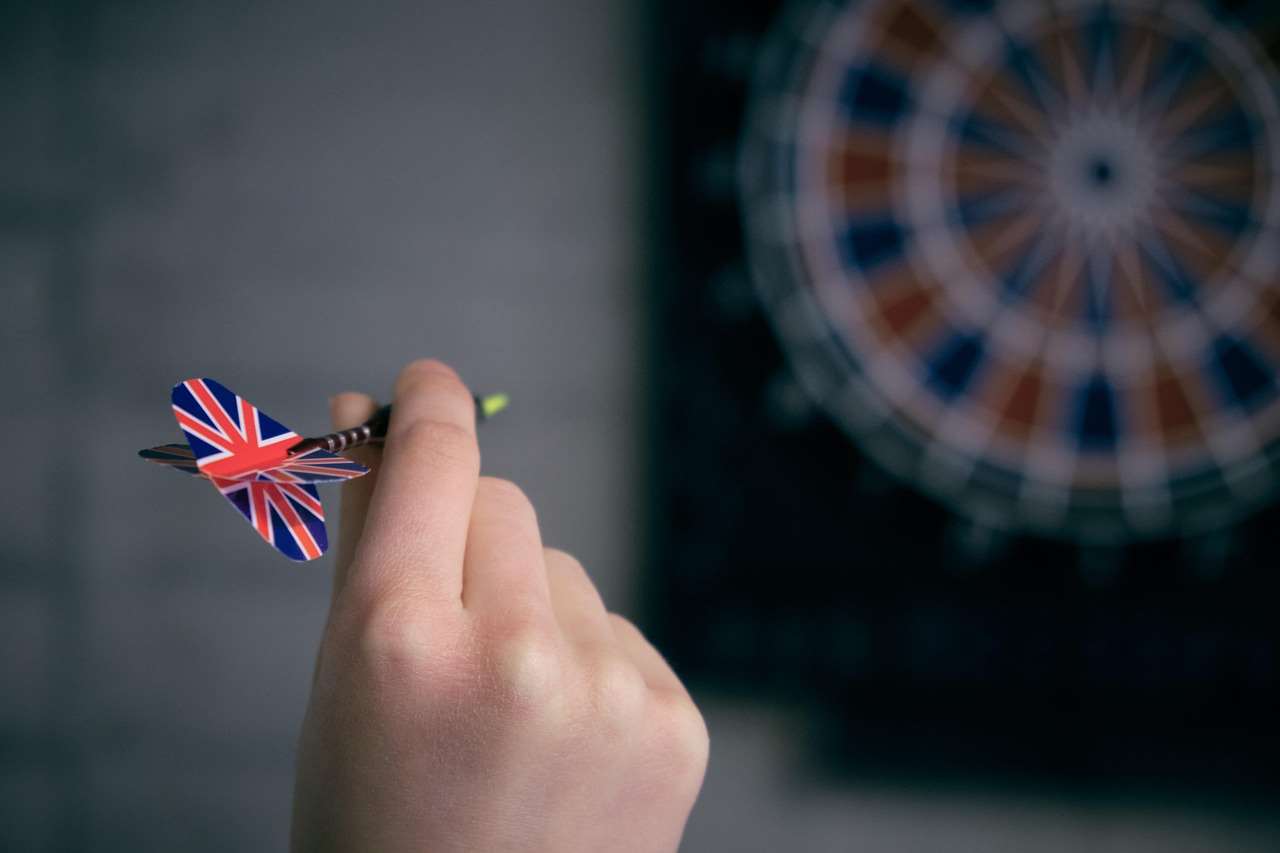
Trying Before You Buy: The Ideal Scenario
Ideally, you should try out different dart setups before making a purchase. Many darts shops allow you to test various weights, grips, and configurations. If possible, take advantage of this opportunity to find which darts to buy that truly feel right for you. Consider bringing your current darts with you for comparison. This allows you to directly compare the feel and performance of different darts side-by-side.
Beginner Darts vs. Professional Darts
Beginners often start with inexpensive brass or nickel silver darts to get a feel for the game. As you progress, you may want to upgrade to tungsten darts for improved performance and durability. Professional darts are typically made of high-tungsten alloys and feature sophisticated grip patterns designed for maximum consistency. Remember to use a Best darts scoring app to track your progress.
Beginner Darts
- Typically made of brass or nickel silver.
- Often come in pre-assembled sets with a variety of shafts and flights.
- More affordable, allowing beginners to experiment without a significant investment.
Professional Darts
- Made of high-tungsten alloys (80% or higher).
- Offer a slimmer profile for tighter groupings.
- Feature precision-engineered grip patterns for consistent release.
- Generally more expensive but offer superior performance and durability.
Budget Considerations
Dart prices can range from under $20 for a basic set to over $100 for high-end tungsten darts. Determine your budget before you start shopping. Remember that you may also need to purchase additional accessories, such as extra shafts, flights, and a dart case. Consider investing in a good-quality dartboard as well. A well-maintained dartboard will last longer and provide a better playing experience.
Maintaining Your Darts
Proper dart maintenance is essential for preserving their performance and longevity. Clean your darts regularly with a soft cloth to remove dirt and debris. Sharpen the points periodically to ensure they grip the dartboard properly. Replace worn shafts and flights as needed. Proper maintenance will help you get the most out of your darts and improve your overall game. Consider using a dart point sharpener to maintain optimal grip on the board. This contributes to fewer bounce-outs and higher scores.
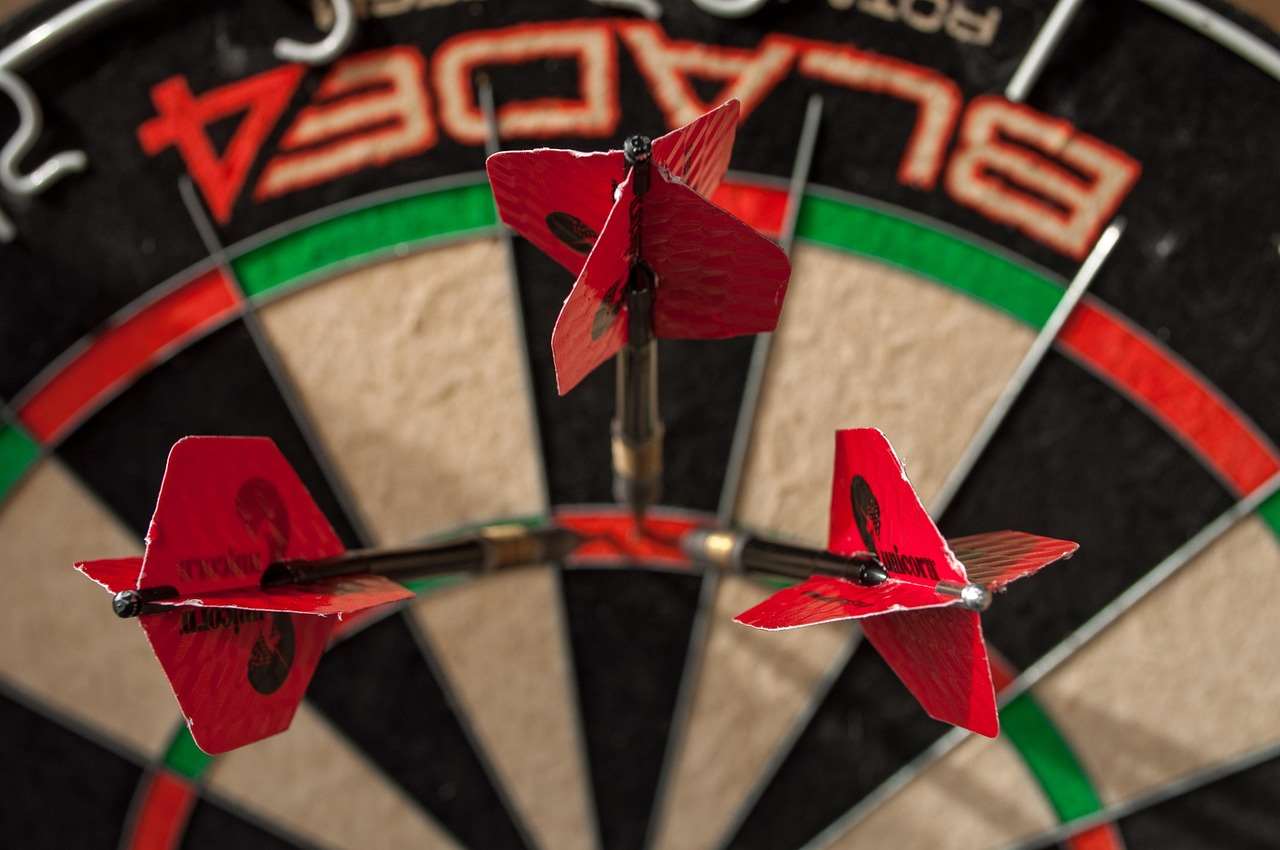
Online Resources and Reviews
Before making a purchase, research online reviews and forums to get feedback from other players. Many websites and YouTube channels offer detailed reviews of different dart models. This can provide valuable insights and help you make an informed decision about which darts to buy. Pay attention to reviews that discuss the dart’s grip, balance, and overall feel. Consider watching videos of professional players using different dart setups to get a sense of what might work for you. Looking for single player dart games to practice with?
Steel Tip vs. Soft Tip Darts
The type of dart you need depends on the type of dartboard you will be using. Steel tip darts are designed for traditional bristle dartboards, while soft tip darts are used with electronic dartboards. Steel tip darts typically have sharper points and heavier barrels. Soft tip darts have plastic tips that are designed to register on the electronic board. Make sure you choose the correct type of dart for your dartboard to avoid damaging either the dart or the board. Steel tip darts are often preferred by more serious players, while soft tip darts are popular for casual play and electronic dartboard leagues.
Customizing Your Darts
Once you have a basic set of darts, you can customize them to further refine their performance. This may involve changing the shafts, flights, or points to achieve the perfect balance and trajectory. Some players even have their darts custom-made to fit their exact specifications. Customizing your darts can be a fun and rewarding way to improve your game. Consider experimenting with different combinations of shafts, flights, and points to find what works best for you. The possibilities are endless! Don’t forget the fun of darts stage set up if you are hosting!
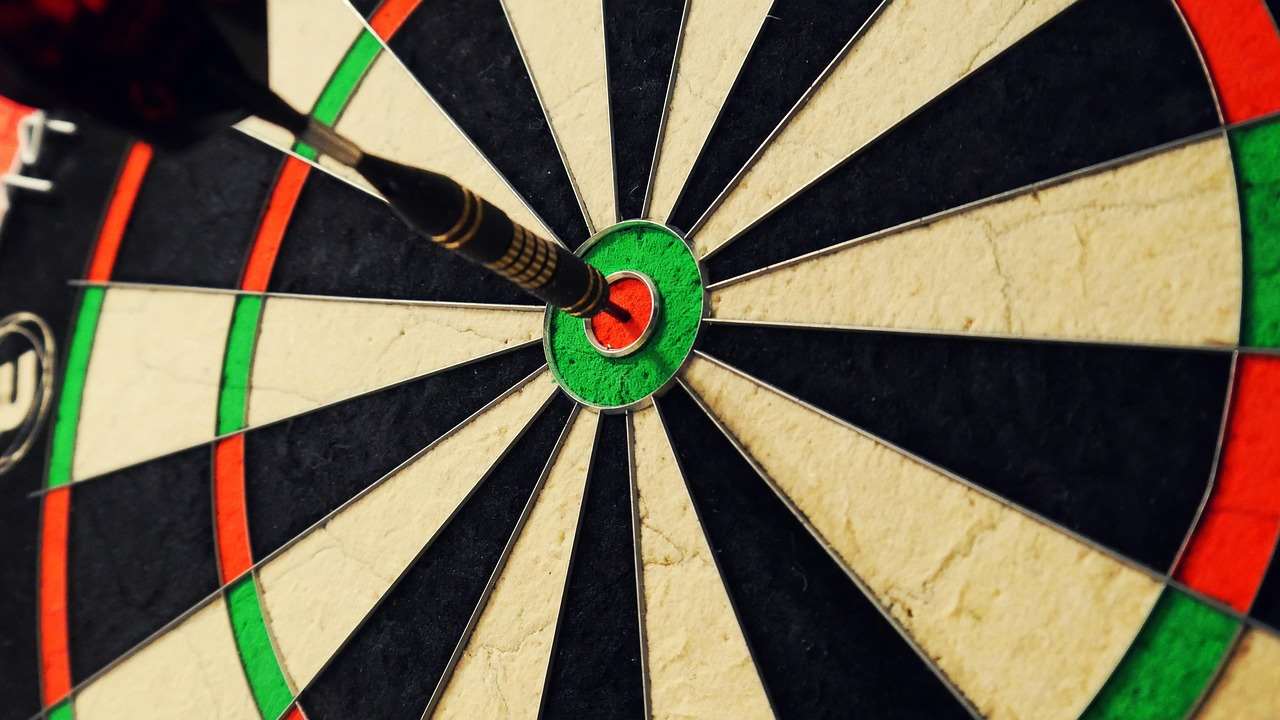
Advanced Considerations
For experienced players, there are more advanced factors to consider when choosing darts. This includes the dart’s balance point (front-weighted, center-weighted, or rear-weighted), the shape of the barrel (straight, torpedo, or bomb), and the specific grip pattern. These factors can have a subtle but significant impact on your throwing style and accuracy. Experiment with different configurations to find what feels most natural and consistent for you. Pay attention to how the dart releases from your hand and how it flies through the air. Small adjustments can sometimes make a big difference. Some even look for the darts winning number!
Joining a Darts League
Joining a darts league is a great way to improve your skills and meet other players. Leagues often have different divisions to accommodate players of all skill levels. This can be a great way to test out your darts in a competitive environment and get feedback from other players. Consider joining a league in your local area to take your game to the next level. Not to mention, it’s a great way to find out which darts to buy from experienced players.
Dart Accessories
In addition to darts, there are several accessories that can enhance your playing experience. These include:
- Dartboard surround: Protects the wall from stray darts.
- Dartboard lighting: Provides optimal visibility.
- Dart mat: Protects the floor and provides a consistent throwing distance.
- Dart case: Keeps your darts safe and organized.
Investing in these accessories can make your home dart setup more enjoyable and professional. Proper lighting is especially important for ensuring consistent performance. A good dart mat can also help improve your accuracy by providing a stable and consistent throwing platform. Enjoy the darts the masters luke littler and get inspired!
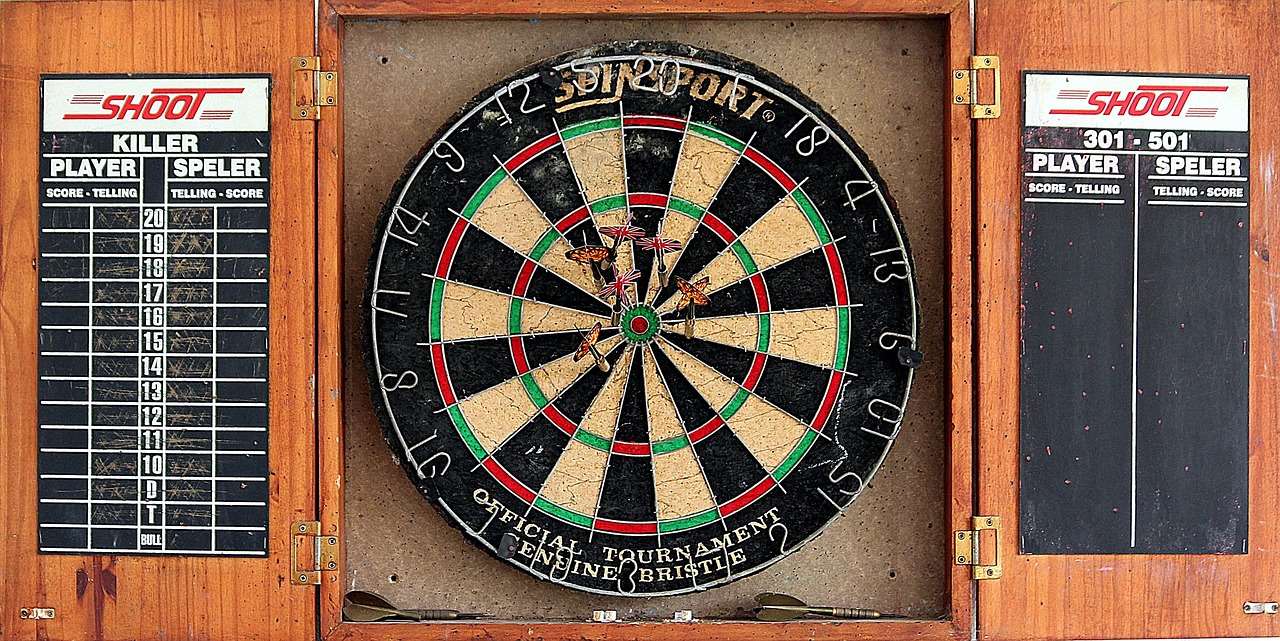
Conclusion
Choosing the right darts is a personal journey. By understanding the key factors – weight, barrel material, grip, shaft length, and flights – you can narrow down your options and find which darts to buy that perfectly complement your throwing style. Experiment, research, and don’t be afraid to try different setups until you find the perfect match. With the right darts in hand, you’ll be well on your way to improving your accuracy and enjoying the game even more. Visit your local darts shop today and start your search for the perfect set of darts!
Hi, I’m Dieter, and I created Dartcounter (Dartcounterapp.com). My motivation wasn’t being a darts expert – quite the opposite! When I first started playing, I loved the game but found keeping accurate scores and tracking stats difficult and distracting.
I figured I couldn’t be the only one struggling with this. So, I decided to build a solution: an easy-to-use application that everyone, no matter their experience level, could use to manage scoring effortlessly.
My goal for Dartcounter was simple: let the app handle the numbers – the scoring, the averages, the stats, even checkout suggestions – so players could focus purely on their throw and enjoying the game. It began as a way to solve my own beginner’s problem, and I’m thrilled it has grown into a helpful tool for the wider darts community.